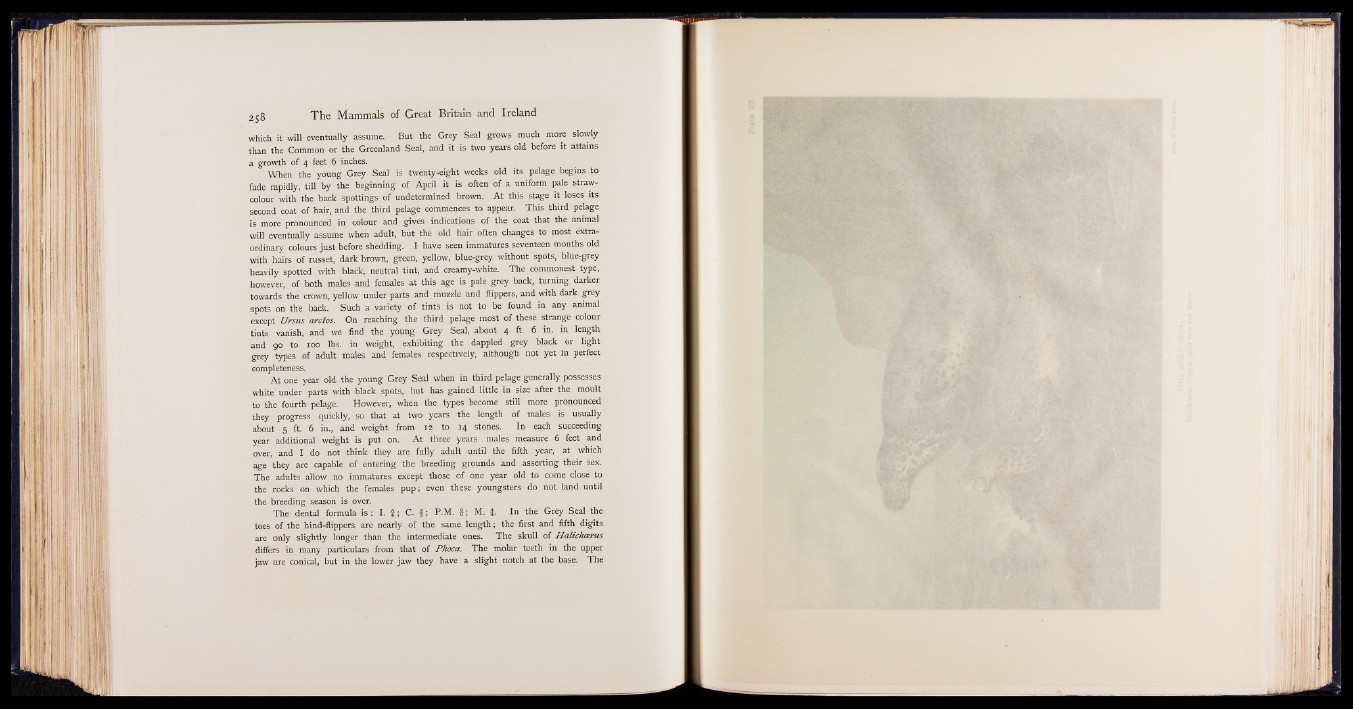
which it will eventually assume. But the Grey Seal grows much more slowly
than the Common or the Greenland Seal, and it is two years old before it attains
a growth of 4 fee^ 6 inches.
When the young Grey Seal is twenty-eight weeks old its pelage begins to
fade rapidly, till by the beginning of April it is often of a uniform pale straw-
colour with the back spottings of undetermined brown. At this stage it loses its
second coat of hair, and the third pelage commences to appear. This third pelage
is more pronounced in colour and gives indications of the coat that the animal
will eventually assume when adult, but the old hair often changes to most extraordinary
colours just before shedding. I have seen immatures seventeen months old
with hairs of russet, dark brown, green, yellow, blue-grey without spots, blue-grey
heavily spotted with black, neutral tint, and creamy-white. The commonest type,
however, of both males and females at this age is pale grey back, turning darker
towards the crown, yellow under parts and muzzle and flippers, and with dark grey
spots on the back. Such a variety of tints is not to be found in any animal
except Ursus arctos. On reaching the third pelage most of these strange colour
tints vanish, and we find the young Grey Seal, about 4 ft. 6 in. in length
and 90 to 100 lbs, in weight, exhibiting the dappled grey black or light
grey types of adult males and femalesjespectively, although not yet in perfect
completeness.
Atone year old the young Grey Seal when in third pelage generally-possesses
white under parts with black spots, but has gained little in size after the moult
to the fourth pelage. However, when the types become still more pronounced
they progress quickly, so that at two years the length of males is usually
about 5 ft. 6 in., and weight from 12 to 14 stones. In each succeeding
year additional weight is put on. At three years males measure 6 feet and
over, and I do not think they are fully adult until the fifth year, at which
age they are capable of entering the breeding grounds and asserting their sex.
The adults allow no immatures except those of one year old to come close to
the rocks on which the females pup; even those youngsters do not land until
the breeding season is over.
The dental formula is ; I. f ; C. I ; P.M. t ; M. t. In the Grey Seal the
toes of the hind-flippers are nearly of the same length; the first and fifth digits
are only slightly longer than the intermediate ones. The skull of Halichtems
differs in many particulars from that of Phoca. The molar teeth in the upper
jaw are conical, but in the lower jaw they have a slight notch at the base. The